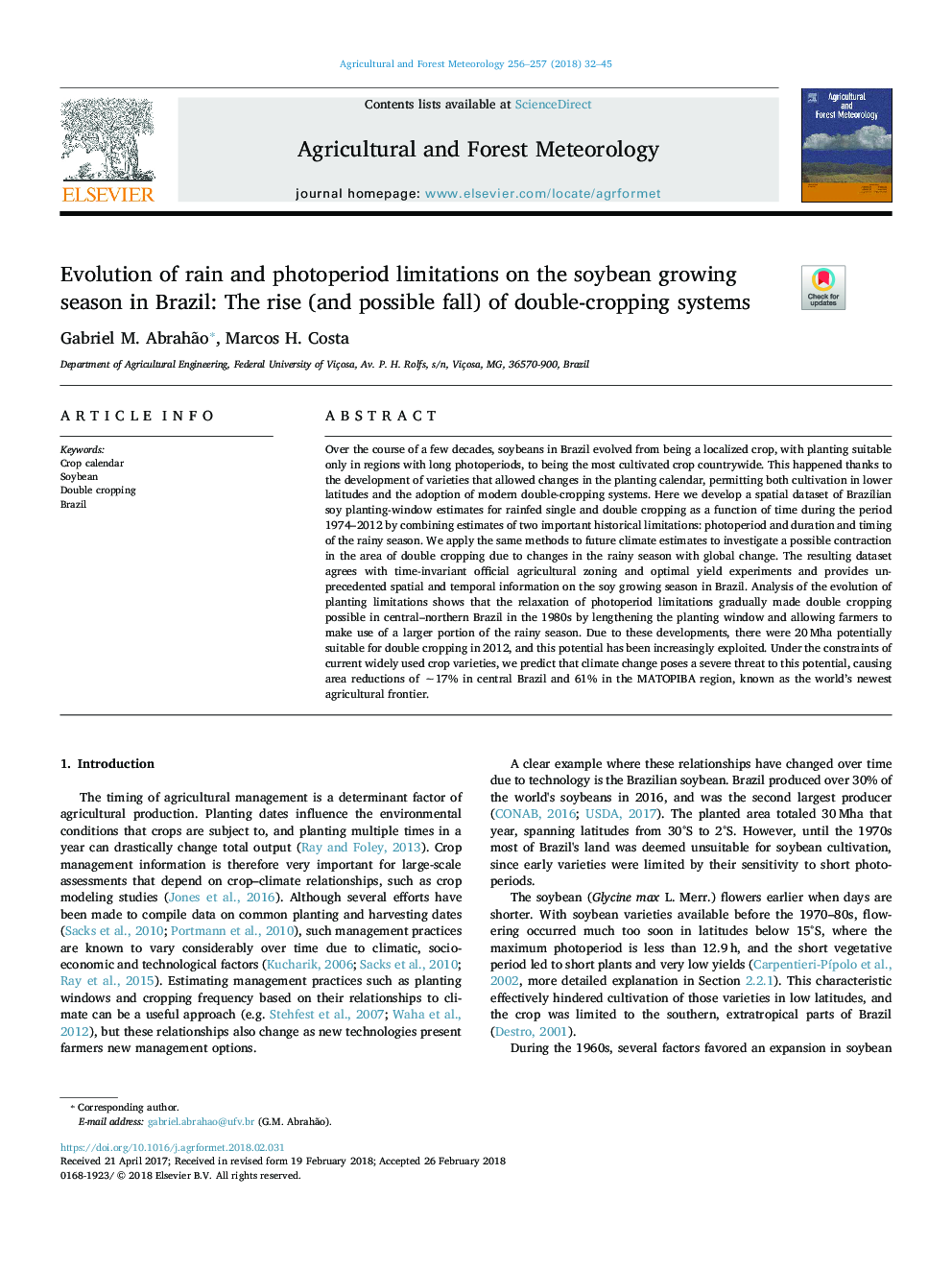| کد مقاله | کد نشریه | سال انتشار | مقاله انگلیسی | نسخه تمام متن |
|---|---|---|---|---|
| 6536678 | 1420847 | 2018 | 14 صفحه PDF | دانلود رایگان |
عنوان انگلیسی مقاله ISI
Evolution of rain and photoperiod limitations on the soybean growing season in Brazil: The rise (and possible fall) of double-cropping systems
ترجمه فارسی عنوان
تکامل بارندگی و محدودیت های فتوریود در فصل رشد سویا در برزیل: افزایش (و سقوط احتمالی) سیستم های دوبار کشت
دانلود مقاله + سفارش ترجمه
دانلود مقاله ISI انگلیسی
رایگان برای ایرانیان
کلمات کلیدی
تقویم کاشت سویا، دوقلو، برزیل،
موضوعات مرتبط
مهندسی و علوم پایه
علوم زمین و سیارات
علم هواشناسی
چکیده انگلیسی
Over the course of a few decades, soybeans in Brazil evolved from being a localized crop, with planting suitable only in regions with long photoperiods, to being the most cultivated crop countrywide. This happened thanks to the development of varieties that allowed changes in the planting calendar, permitting both cultivation in lower latitudes and the adoption of modern double-cropping systems. Here we develop a spatial dataset of Brazilian soy planting-window estimates for rainfed single and double cropping as a function of time during the period 1974-2012 by combining estimates of two important historical limitations: photoperiod and duration and timing of the rainy season. We apply the same methods to future climate estimates to investigate a possible contraction in the area of double cropping due to changes in the rainy season with global change. The resulting dataset agrees with time-invariant official agricultural zoning and optimal yield experiments and provides unprecedented spatial and temporal information on the soy growing season in Brazil. Analysis of the evolution of planting limitations shows that the relaxation of photoperiod limitations gradually made double cropping possible in central-northern Brazil in the 1980s by lengthening the planting window and allowing farmers to make use of a larger portion of the rainy season. Due to these developments, there were 20â¯Mha potentially suitable for double cropping in 2012, and this potential has been increasingly exploited. Under the constraints of current widely used crop varieties, we predict that climate change poses a severe threat to this potential, causing area reductions of â¼17% in central Brazil and 61% in the MATOPIBA region, known as the world's newest agricultural frontier.
ناشر
Database: Elsevier - ScienceDirect (ساینس دایرکت)
Journal: Agricultural and Forest Meteorology - Volumes 256â257, 15 June 2018, Pages 32-45
Journal: Agricultural and Forest Meteorology - Volumes 256â257, 15 June 2018, Pages 32-45
نویسندگان
Gabriel M. Abrahão, Marcos H. Costa,
